“Kingsburg? Never heard of it.”
“The player boards for this aren’t nearly as good as On Mars.”
“So, tell me again all of the names of these people on the board?”
“A dice game? Nah. It’s probably too swingy.”
I’ve heard it all. Every time I break out the original 2007 edition of Kingsburg (the game was reprinted in 2017 with new artwork and all the game’s expansions in one box), I can see the doubt creeping across a new player’s face.
Then, they roll the dice for that first productive season and begin to see the light.
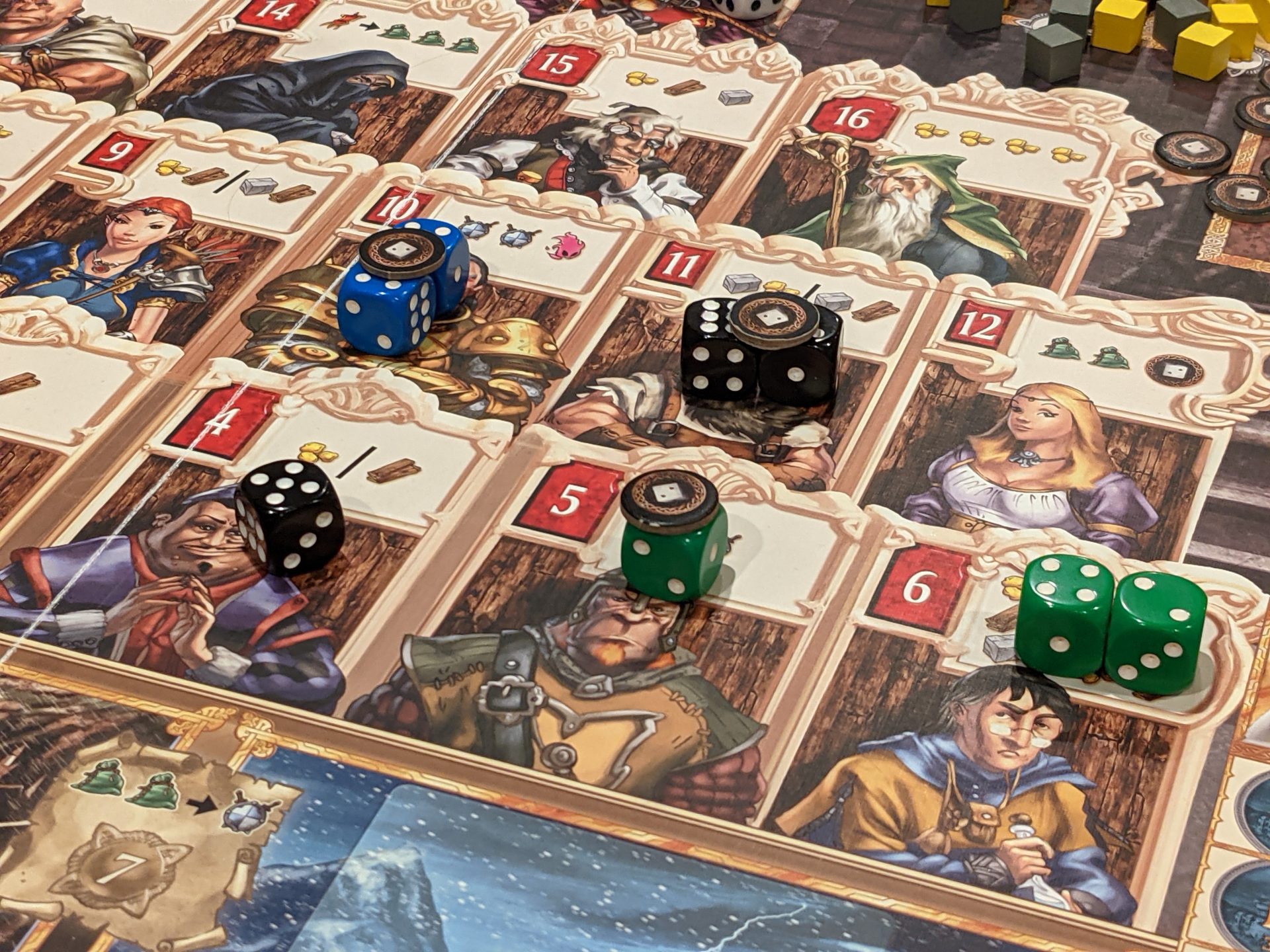
Spring, Summer, Autumn, Goblins
In Kingsburg players are governors working to gain favor with King Tritus and his trusted advisors. You’ll need to gain resources, recruit soldiers, and gather advance scouting information to defend the realm of Kingsburg from the evil hordes conspiring to destroy the realm.
The main game board in Kingsburg has a score track running along the border, from zero to 60. (Yes, I know—it’s not up to 100 like every other board game ever! You’re getting excited, right?) There are 18 advisors taking up the majority of the board, and each advisor has space for player-placed dice along with a benefit. The first few advisors don’t grant much: a single point, a single wood resource, etc. But as you go up in value—aligned with the dice total needed to place your dice on an advisor’s space—the benefits begin to grow. And some of the benefits for advisors in the top tier are really strong, assuming you have a combined dice roll to take advantage of these spaces.
Players have their own player board (whoops, province board) with a set of 20 buildings that can be constructed over the course of the game. By gathering resources from the advisors, players can construct these buildings, which grant victory points as well as player powers which break the game’s rules in various ways: rerolling your dice, gaining defenses when orcs show up on your doorstep in the winter season, or providing free resources at certain points each round.
Kingsburg is played over five rounds, each round representing one year. Each year is broken into eight phases. Phases 2, 4 and 6 are the easiest to describe—these are known as the productive seasons, Spring, Summer and Autumn. That’s when you get to roll some dice! Each player has three dice in their player piece color to roll every time, with certain game and building conditions allowing players to have more dice added to their pool.
Players will all roll their dice, and player order for the rest of that specific phase is determined by the total rolled. The lowest total will select advisors first, and so on. On your turn you can place any number of your dice on a single advisor, with that total being an exact match to what that advisor requires. For example, you can add a rolled 5 die to the Sergeant advisor space because it requires a 5; you could instead add a 2 and a 3 to the same space if that’s what you rolled that turn.
You can also add a single +2 token—earned through various gameplay effects—to one advisor space once per season, in case you need to boost your dice roll. After you’ve placed one or more dice, play passes to the next player.
After all player dice have been placed and each advisor has been resolved, phases 2, 4, and 6 allow all players to build exactly one building on their province board, spending resources acquired during the current or past productive seasons and scoring victory points for any new construction.
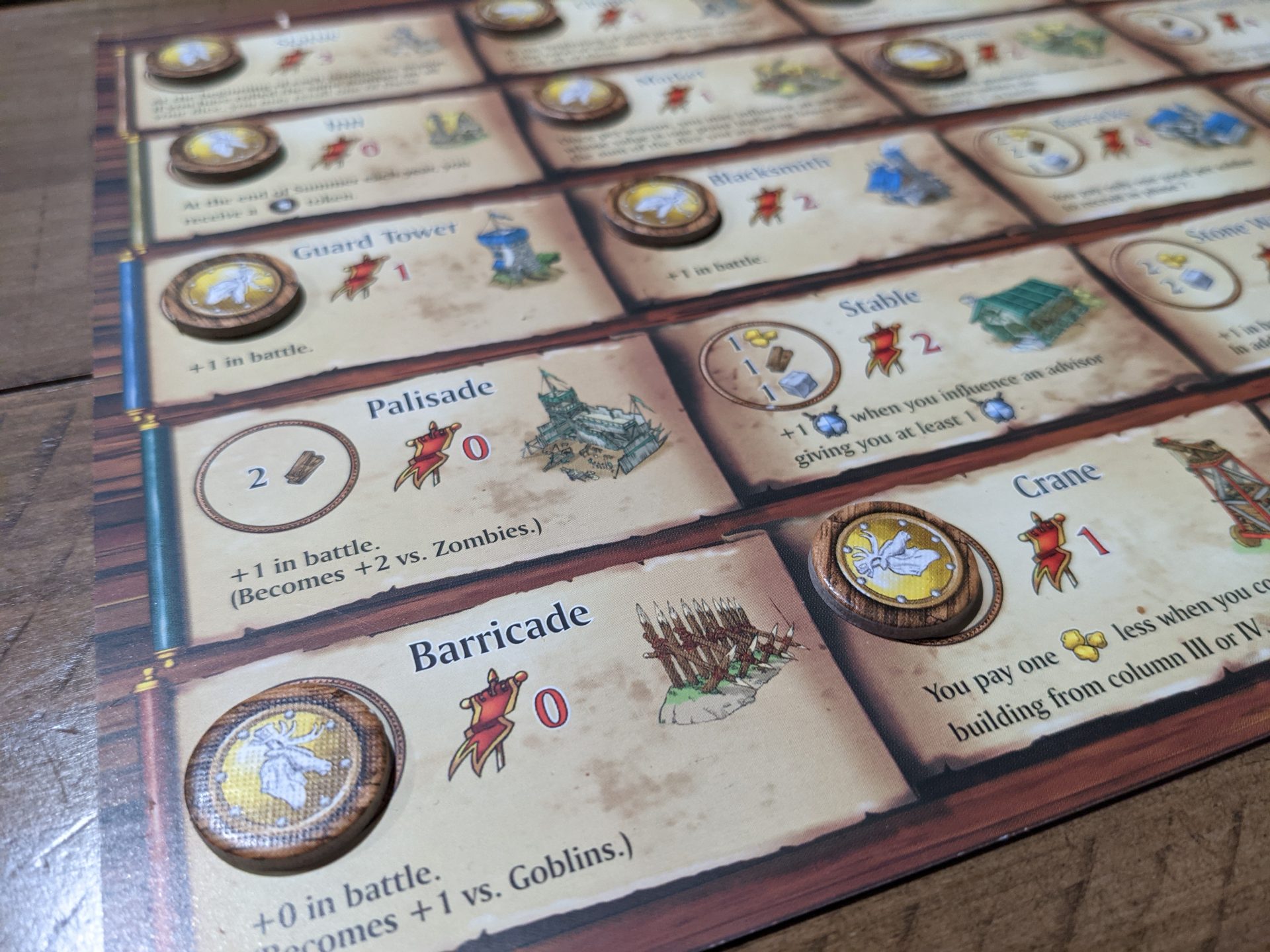
The Other Phases Are a Breeze
Phases 1, 3, 5 and 7 in Kingsburg are quick prep steps before the seasons:
- Phase 1 is “Aid from the King.” Whoever has the fewest number of constructed buildings gets an extra white die from the supply to roll with their normal player dice for Spring only.
- Phase 3 is “The King’s Reward.” Players who have the most buildings on their province board get one point, with friendly ties.
- Phase 5 is “The King’s Envoy.” If any player has the fewest buildings and the fewest resources (in case there’s a tie for fewest buildings), they receive the Envoy token. Over the next four seasons—so, until the end of the next year’s Summer—the owner of the Envoy token can, one time only, build twice in a productive season OR share an advisor space with another player, effectively unblocking their ability to gain that advisor’s favor.
- Phase 7 allows all players to spend two resources to gain one soldier (any number of times, if they have the resources) to fight the battle coming in phase 8. In all of my Kingsburg plays I have maybe seen players use this ability twice (the province board has an upgraded version of this power which is better). Everyone passes in phase 7, and you should too!
Each year ends with phase 8, Winter. At this point, things can get…spicy.
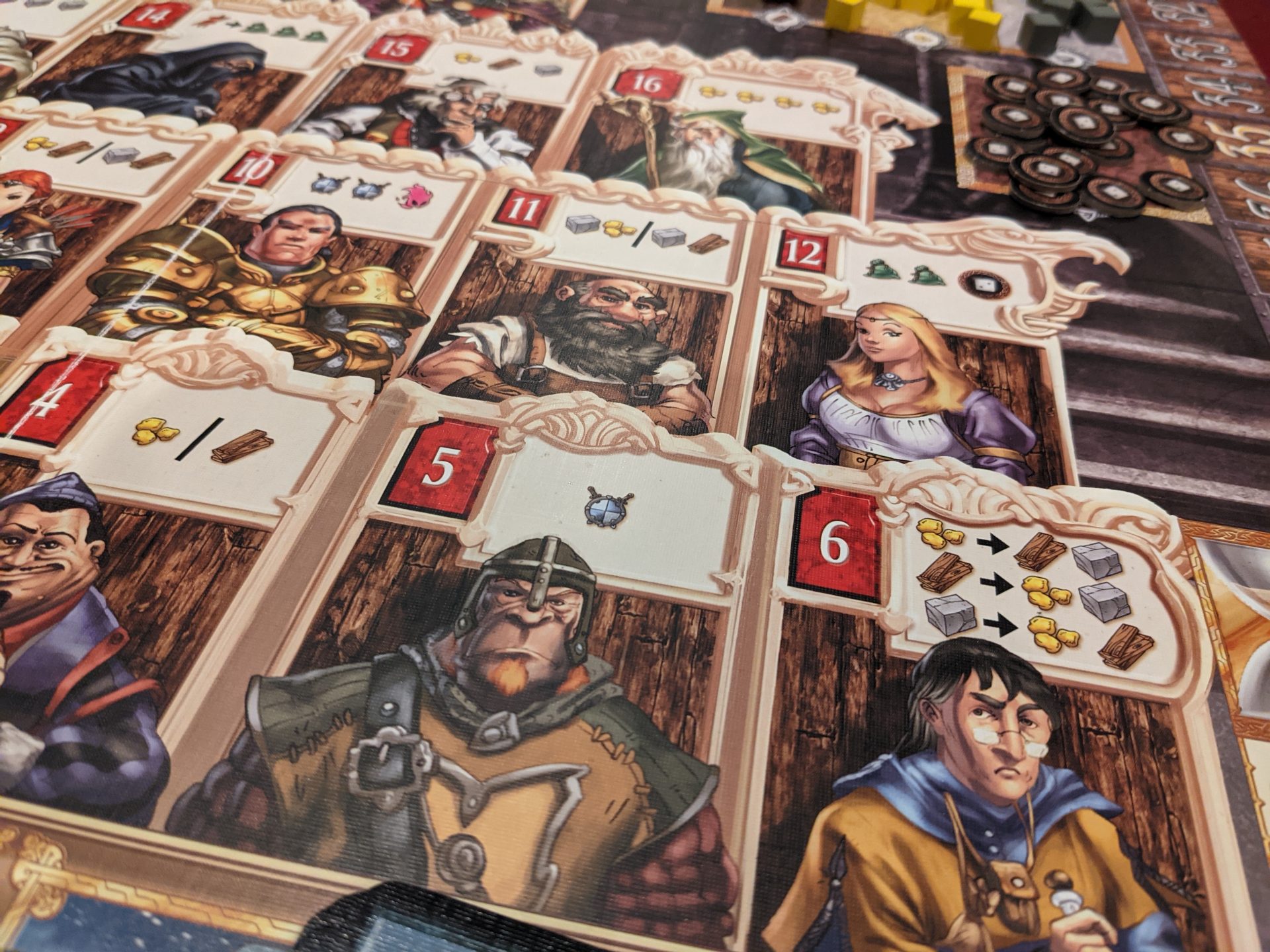
Winter is Coming, Alright
Phase 8 ends up being one of the more thrilling moments in Kingsburg. A face-down card represents the evil horde approaching the border of the realm in Winter. There’s a number on the card; in the first year, it just says that something which has between 2-4 attack power will show up on your doorstep. For the entire round, you have a vague idea of the baddie who will be coming, so you can begin to plan (and maybe take advisor actions to boost your defenses before Winter arrives).
When Winter begins, the monster card is flipped. Let’s say Goblins have arrived, with an attack value of 3. You, the red player, haven’t bothered to boost your defenses at all during the round, so you are currently at zero defense. You check your province board and you have built the Barricade, which is normally worth zero defense in battle but it is worth +1 against Goblins.
Now, the first player in turn order rolls a single die. The result is the added defense all players will get against the Goblins for this round. The odds are in your favor: a roll of 2 gives you a total of three, meaning that nothing bad will happen to your part of the realm (your province board’s buildings and other resources). A roll of 3+? You’re golden, and you’ll get a small reward for your part in warding off the Goblin attack, maybe a point or a stone resource.
Then the first player rolls a one. You bury your head in your hands. Other players cackle,or pat you on the back, or quietly plan around your demise. Either way, it’s a moment, and it’s a moment I love every time I play this game!
Your penalty for your part in losing the battle? Each enemy card is different; let’s say this time you lose two resources and your highest-ranked building. This is always the building farthest to the right on your province board; if there’s a tie, measure from top to bottom to find the building you must destroy. This is almost always the building that will lose you the most points.
Every time I’ve lost a building in this way, I’ve lost that game of Kingsburg; it’s really difficult to come back from a lost building because gathering resources can be such a challenge. Don’t let it happen to you!

The expansions
The base Kingsburg experience, particularly at four or ideally five players, is excellent. It’s best at five because competition on the board for advisor spaces is really tight at the full player count, and blocking players with the dice you have is an exceptional amount of fun. The building powers are very good and I’ve taken time to only go down two of the five rows on the province board in some games (to help with dice actions), while spreading out into only the first two columns in all five rows of the province board in other games (for a balance of offense, defense, and flexibility during productive seasons).
The variability in the core box is great, and that’s before you add in random dice rolls driving your strategy each game. So you don’t need anything else.
However, I bought my used copy years ago and the seller added Kingsburg: To Forge a Realm, the only major expansion for the base game, released in 2009. (Apparently there were a number of “scenarios” released, but I never played those and they appear to be impossible to find on the secondary market now.)
This expansion added a few things: an event deck that changes a couple of the rules each year/round; player powers; alternate province boards. All great, and all added variability, but I’m not sure any of those were needed.
There’s one module in To Forge a Realm that is a gamechanger: Module 5, which changes the way each player gets reinforcements/defense each Winter season. Instead of one player rolling a die to determine the number of soldiers sent by the king to assist against the enemy, you select from one of six defense tokens given to each player at the start of the game, numbered 0, 1, 1, 2, 3, and 4.
Before the monster card is revealed, each player secretly selects one token to add to the value of any defense generated by soldiers hired during the year, plus any additional powers granted by their province board.
There are five rounds in Kingsburg, so the sixth token is what you have left at the end of the game…and that token is converted into victory points for final scoring, so finding a way to keep that 4 token handy could mean 4 extra points at game end!
This specific expansion module is so good that I use it now for playing the base game. Wisely, the 2017 version of Kingsburg includes all of these expansions in the base box for no extra fee, along with a sixth expansion module that I have not played. That’s a lot of game in one box, even if I think you only needed the base game.
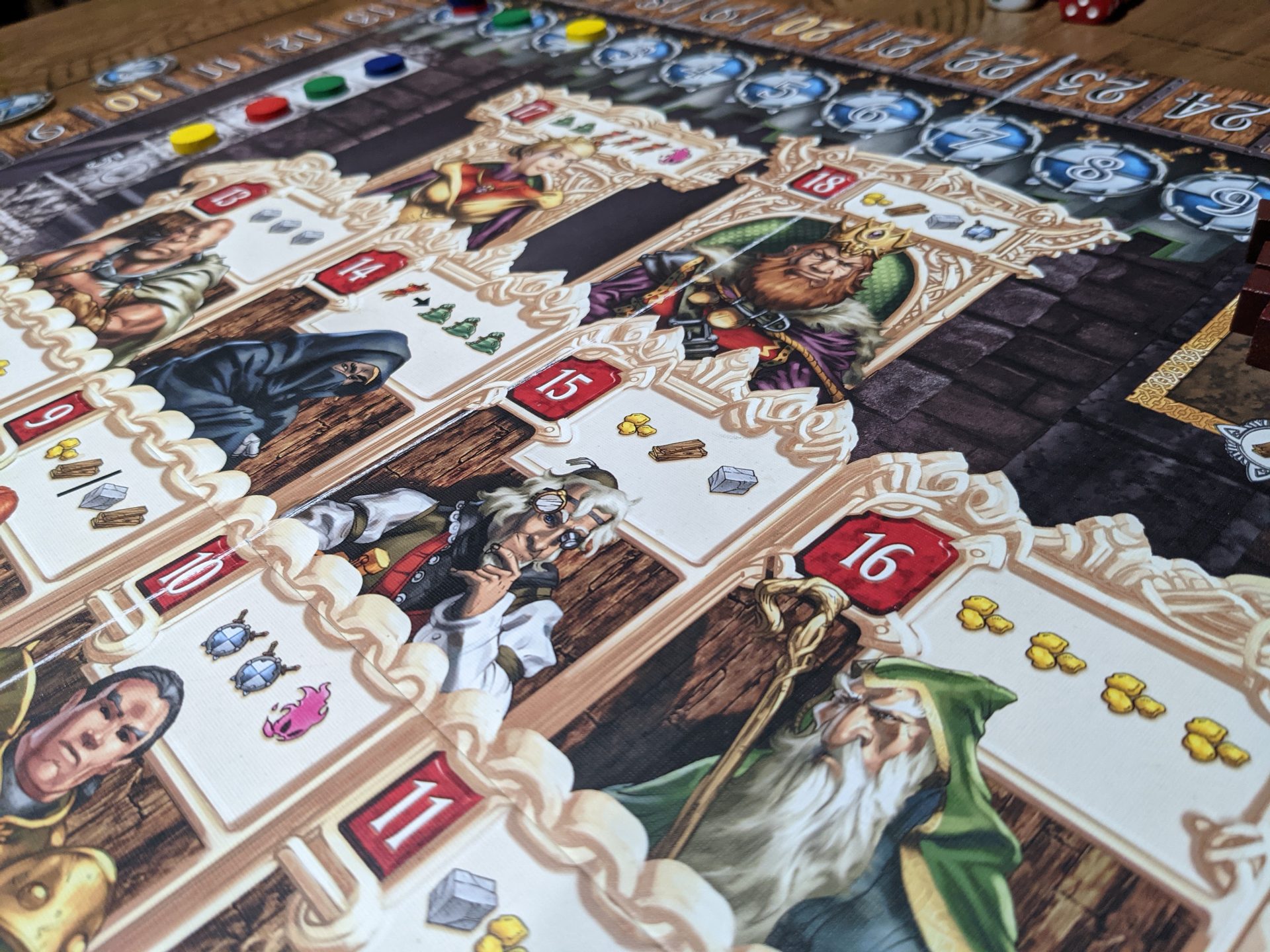
I Love It!
Kingsburg is never leaving my collection. I did a game weekend with three friends from high school four years ago, and the highlight of the 13 different games we played that weekend was Kingsburg. We played it three times, more than any other game that hit the table.
Kingsburg is always a blast. Casual gamers can learn the rules quickly; core gamers love the ways you can mitigate poor dice rolls by picking up points and resources even on rougher turns. The artwork is just the right kind of plain for me, as it doesn’t really get in the way; the components are fine, not extravagant and a great reminder of how games have changed over the last 15 years. (Well, maybe not 15 years, since the player “boards” in the base box for Terraforming Mars still irk me for the lack of quality!)
And with four players who know how to play, Kingsburg can be set up and played in an hour. Sometimes when I stare at a few of the games on my shelf, I frown on the idea of spending 30-40 minutes to get them set up. You will never have that issue with Kingsburg!!
It’s really hard to find the original 2007 version of Kingsburg now, so going with the 2017 version is the right move. If you love a good dice chucker mixed with a medium-weight dose of strategy, grab Kingsburg and thank me later!






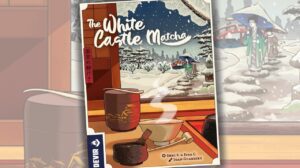





Add Comment